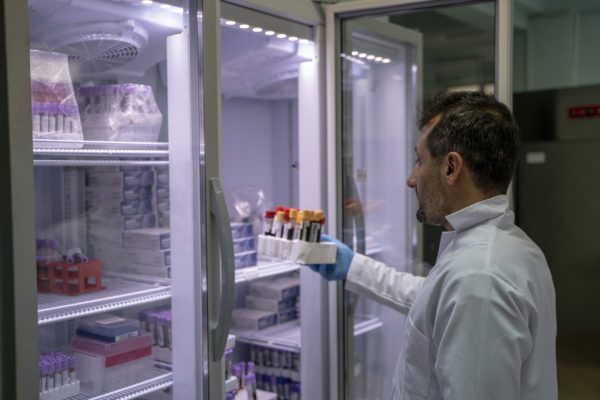
A major requirement for a successful research environment is the use of laboratory freezers to provide safe and dependable storage conditions. For the storage of medical, pharmaceutical, and biological samples, a properly functioning lab freezer is essential. These specialty freezers are designed to cool or freeze samples for preservation. Scientific freezers come in a range of formats and sizes including upright, freestanding, and under-counter models, to suit the needs and purposes of many different scientific laboratories.
What are Lab Freezers used for?
Scientific freezers can be utilized for a variety of purposes ranging from medical to biological uses. In the medical field, lab freezers can be used in blood banks, hospitals, and research institutes to contain bacteria, viruses, blood, and semen. For biological uses, lab freezers can help plant and protein growth, provide photostability, and storage for genetic manipulation agents.
What Temperature is a Lab Freezer?
The average household freezer should be kept at 0 degrees Fahrenheit, or -18 degrees Celsius. Lab freezers are not considered residential grade and should be kept at a range between -40 and 10 degrees Celsius depending on the type of products being stored. For example, freezers at -30 degrees Celsius are used for storing plasma while those operating at 20 degrees Celsius are used for storing enzymes. Ultra-low temperature freezers can reach levels of -50 degrees Celsius and are normally used for cryogenic freezing purposes.
 How Long do Lab Freezers Last?
How Long do Lab Freezers Last?
Lab freezers tend to be used as long-term preservation units and are built to last, with a lifespan of about twelve to fifteen years. However, the type of freezer can change the life expectancy; for example, an ultra-low freezer usually lasts about ten years. To help extend the life of your freezer and keep it running smoothly, follow these tips:
- Minimize Frost Build Up: Ideally a lab freezer should be defrosted twice a year, so ice and frost does not build up causing stress on gaskets or inhibiting staff from accessing the samples.
- Keep the Condenser Clean: Cleaning the condenser filter every three months and the condenser coil every year is recommended to allow heat to move out of the freezer.
- Choose the Right Placement: It is important to adhere to the guidelines provided by the manufacturer when choosing a freezer location to allow for proper air circulation without obstructions.
- Keep the Freezer Gaskets Clean: When the gaskets are clean and intact, a tight seal is formed between the door and the unit. Wiping down the gaskets once a month can stop dust and dirt from impeding this seal.
Common Lab Freezer Features
At Powers Equipment, lab freezers can be customized for a variety of needs and purposes. Many additional features are available to meet your specific requirements, including:
- Power Failure Alarms
- Data Recorders
- Casters
- Adjustable shelves
- Roll-Out Drawers
Powers Equipment focuses on the quality and reliability of scientific freezers that meet the critical control factors required in the industry. Our custom 6 to 79 cubic feet energy-efficient, CFC-Free temperature-controlled equipment accurately regulates all required parameters to create optimal research environments. As a leader in the commercial refrigeration industry, our experienced team is ready to help you choose the right equipment for your needs. For more information about our smooth buying process, email sales@powersequipment.com or call us at 1-800-673-7868.

 How Long do Lab Freezers Last?
How Long do Lab Freezers Last?